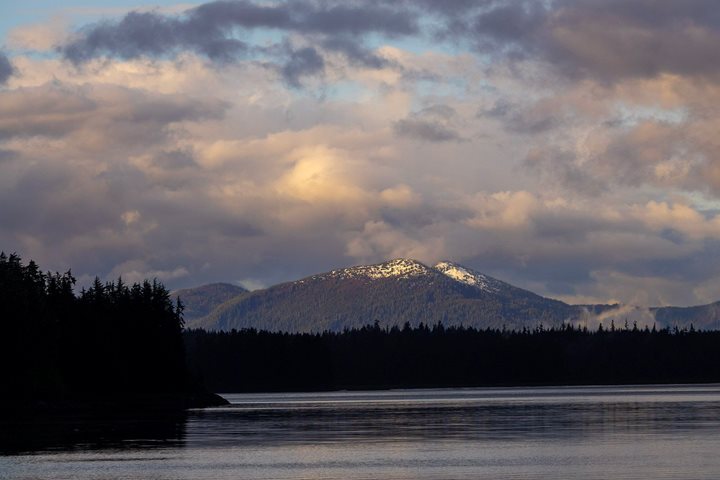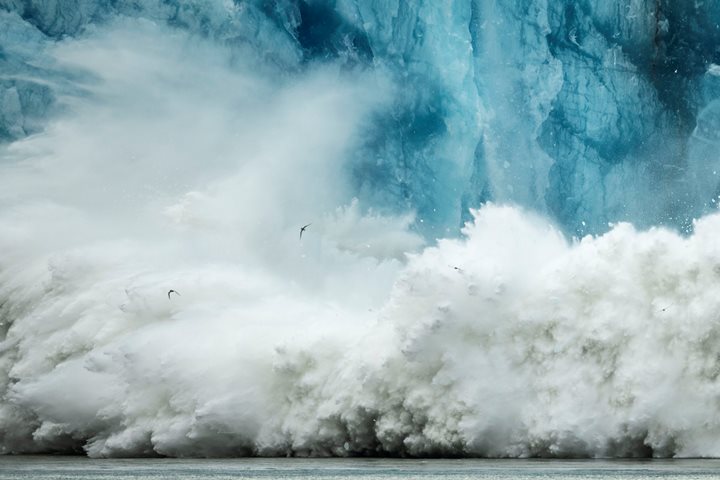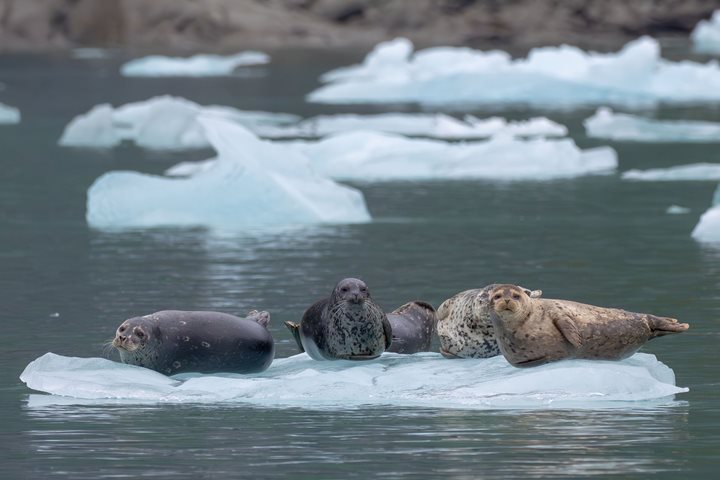On the first full day of our expedition aboard National Geographic Sea Lion we entered Endicott Arm early and sailed toward our destination, Dawes Glacier. It was an uncharacteristically warm and beautiful blue-sky day in southeast Alaska. The fjord was littered with ice sculptures that had calved from the glacier and were melting in the water. Huge icebergs were evidence that there had been several large calving events in the recent past. A visit to the tidewater glacier in our Zodiacs was an exciting and new experience for most. After the visit we sailed back down the fjord to Stephens Passage and were treated to an exuberant humpback that breached. Continuing south, we were in Frederick Sound when we ended our day with a great encounter with a pod of killer whales.
- Daily Expedition Reports
- 31 Jul 2021
Endicott Arm, Dawes Glacier, 7/31/2021, National Geographic Sea Lion
- Aboard the National Geographic Sea Lion
- Alaska
Kelly Coursey Gray, Naturalist/Certified Photo Instructor
I like to remind people that there are very few big surprises left in life, but if you are out in nature, with an open mind and a lot of time, you never know what you will find.
Read MoreEric Wehrmeister, Videographer
Eric began his life on the far western edge of Chicago, where the concrete meets the cornfields. His inspiration has always drawn from the expansive beauty of the natural world, as well as the endless forms that populate it.
Read MoreShare Report
Alaska Escape: LeConte Bay, Wrangell and Misty Fjords
VIEW ITINERARYRelated Reports
5/29/2025
Read
National Geographic Sea Bird
Endicott Arm
Dawes Glacier, located at the head of Endicott Arm in Southeast Alaska, is an active tidewater glacier in the remote Tracy Arm-Fords Terror Wilderness Area. Reaching the glacier requires a 30-mile journey through a narrow fjord lined with sheer rock walls rising over 3,000 feet. These cliffs are veined with waterfalls and often blanketed in mist. Throughout the fjord, remnants of the glacier float in the form of icebergs. The glacier feeds cold, silty meltwater into the fjord, giving the water a distinctive milky-green hue and supporting a rich marine food web. Harbor seals were hauled out on ice floes near the glacier. Gulls and Arctic terns were actively feeding, likely drawn by the small fish and plankton concentrated by the glacial outflow. The glacier calved several times, hurling large chunks of ice across the water’s surface, sending the birds fleeing. The sound of the ice hitting the water echoed off the steep rock walls that rise thousands of feet on either side.
5/27/2025
Read
National Geographic Sea Bird
Dawes Glacier in Endicott Arm
We could not have asked for a better way to end the expedition. Our last day was amazing! Visiting Dawes Glacier in Endicott Arm was a highlight with its crystal-blue ice and resting harbor seals floating by on the ice. In the evening, we even got to see a couple of humpback whales off the bow of the ship. We ended the day by watching images of the beautiful moments created on our expedition during the famed guest photo slideshow.









